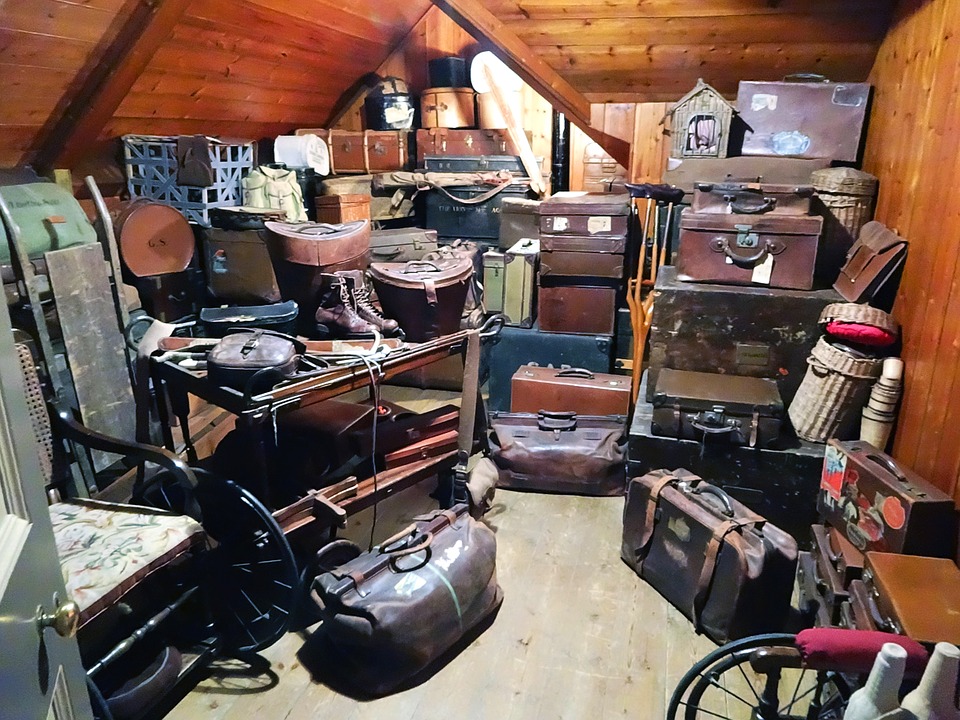Julie Entwistle, MBA, BHSc (OT), BSc (Health / Gerontology)
We all have keepsakes that are difficult to throw away. Personally, I still have a bag of stuffed animals from when I was a kid (downsized from the four garbage bags of stuffies I had when I got married), and also have a box called “sentimental stuff” that is filled with cards, letters, and keepsakes that I just can’t emotionally part with (poems from my great-grandmother, the last card my grandparents sent me before they passed away, etc).
While these items and “stuff” may be taking up some closet space, they do not significantly affect my ability to function. That is when being a “pack rat” can cross a line and refers to the subset of the population whose life is significantly impacted from ‘stuff’ building up in their homes. In 2013 “hoarding disorder” officially became a clinical diagnosis, and it is estimated to affect 3-5% of the population.
Hoarding is defined as “persistent difficulty discarding or parting with possessions, regardless of the value others may attribute to these possessions. People with this problem accumulate a large number of possessions that often fill up or clutter active living areas of the home or workplace to the extent that their intended use is no longer possible” (Diagnostic and Statistical Manual of Mental Disorders, 5th Edition).
This is a real disorder that has a negative impact on an individual’s emotional, physical, social, financial and even legal aspects of life. Hoarding can get in the way of a person’s ability to participate in daily meaningful occupations, which can result in a deterioration in health and wellness.
It is important for individuals struggling with hoarding to seek treatment. The two current “best treatments” for hoarding disorder are pharmacological and cognitive behavioral therapy (CBT). CBT recognizes that a person’s thoughts and feelings and behaviors are interconnected and influence one another. Occupational Therapists can use CBT to help someone with hoarding disorder address their disruptive thoughts and feelings to decrease the behavior of hoarding.
While the majority of the population does not struggle from hoarding disorder, the build-up of clutter in a home can sneak up on all of us, and lead to negative consequences such as a disorganized home, feeling discouraged and overwhelmed, and the frustration of misplacing or taking time to find items, to name a few. Here are some unique ways to decrease clutter in the home:
1. Start with 5 minutes. It can be overwhelming to start the process of decluttering, therefore, start with 5 minutes a day and be satisfied with your accomplishments at the end of this time.
2. Give one item away every day for a year. Check out www.365lessthings.com, a blog about a woman who gives away one item a day.
3. Start by filling one bag. Whether it is a donation bag or a trash bag see how quickly you can fill one bag of items to give away or throw out.
4. Do the “Closet Hanger Experiment”. Hang all your clothes with hangers in one direction. After you wear an item replace the hanger in the closet facing the other way. After one year throw away all the clothes on hangers facing the original side – you did not wear these items for a whole year!
5. Do the “12-12-12” challenge. Find 12 things to throw out, 12 things to donate and 12 things to be returned to their proper place in your home.
6. Use the “Four-Box Method”. Systematically go through each room in the house and assign every item to one of four boxes: trash, give away, keep, or relocate. Every item must be assigned something! Remember – you do not have to do this all at once, take your time to go through each room!
7. Make a list and set a time. Make a list of areas in your house you want to clean/declutter then set a time for each one (i.e. 10 minutes, 20 minutes, 40 minutes). Start with the first thing on the list and then STOP when time is up. If you did not finish that area within the given time, set a new time and try again later!
8. Try the “Travelers Method”. Think about how small a suitcase is and how you have to prioritize items when packing for a trip. Use the same mindset when decluttering.
9. Rearrange the room. Every few months rearrange furniture in major rooms (i.e. couches, desks, shelves). This will force you to find the junk that has been collecting throughout your home.
10. Play “Musical Chairs” with your closet. Remove all your clothes and hangers from the closet. Take away 5-10 hangers. Start to put your clothes back one at a time, each time assessing whether to keep the clothing item. STOP once you run out of hangers and donate remaining clothes.
A few other useful tips can include calling a friend to come to help – then reciprocate the offer, or call for a free pick-up of household items and once this is on the calendar make sure you fill a box to donate! Diabetes and Cerebral Palsy are a few local (Ontario) programs that turn your unneeded items into charity.
Decluttering can seem like a daunting process, but using these strategies, and setting small attainable goals, can help you have a peaceful, clutter-free home and mind!

